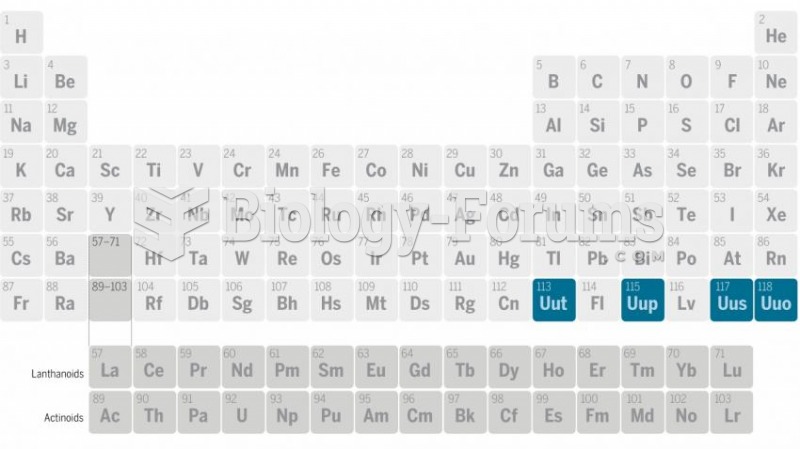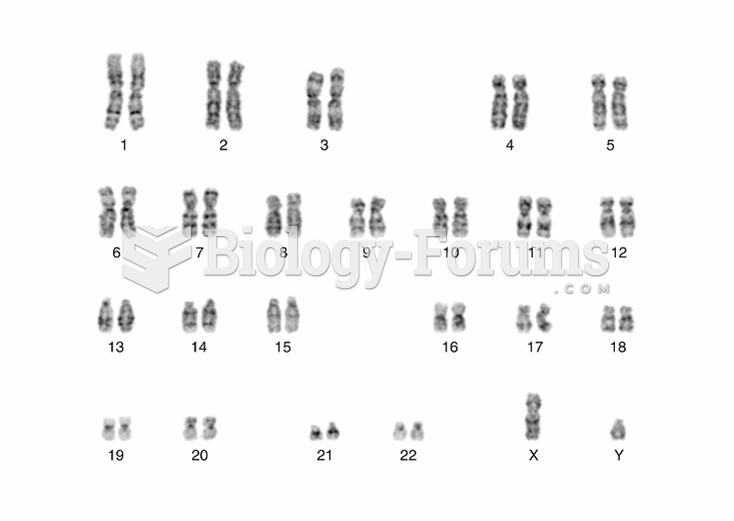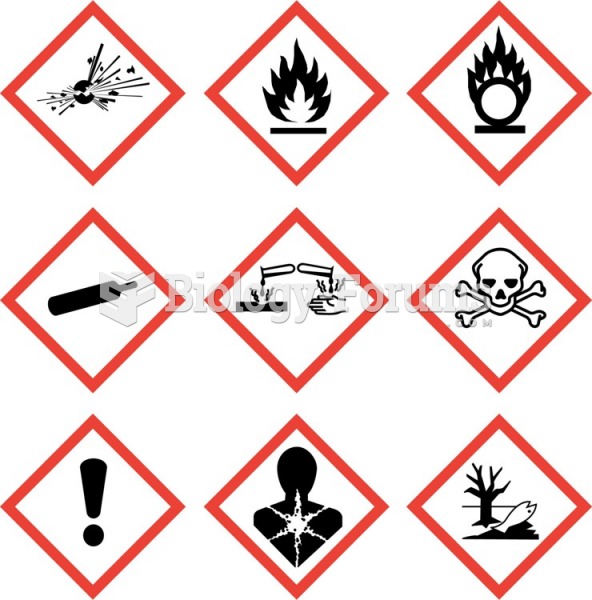|
|
|
Allergies play a major part in the health of children. The most prevalent childhood allergies are milk, egg, soy, wheat, peanuts, tree nuts, and seafood.
Elderly adults are at greatest risk of stroke and myocardial infarction and have the most to gain from prophylaxis. Patients ages 60 to 80 years with blood pressures above 160/90 mm Hg should benefit from antihypertensive treatment.
There are more sensory neurons in the tongue than in any other part of the body.
The first-known contraceptive was crocodile dung, used in Egypt in 2000 BC. Condoms were also reportedly used, made of animal bladders or intestines.
The shortest mature adult human of whom there is independent evidence was Gul Mohammed in India. In 1990, he was measured in New Delhi and stood 22.5 inches tall.
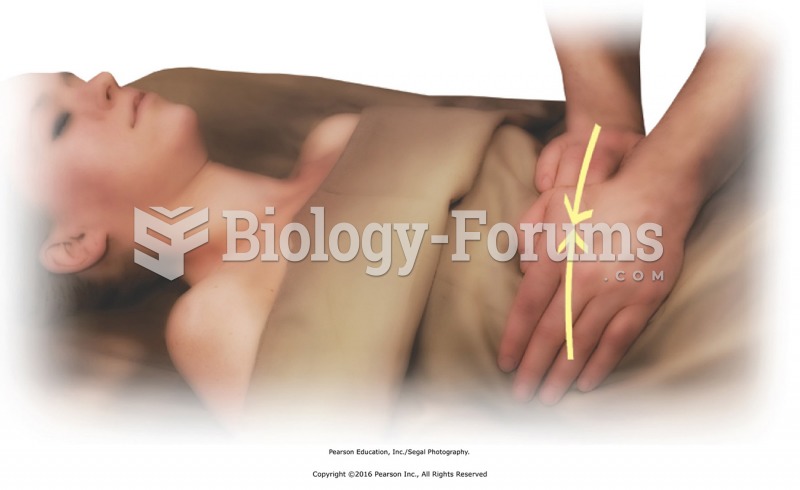 Mobilize the rib cage. Redrape to cover the chest, and stand to one side of the table. Place your ...
Mobilize the rib cage. Redrape to cover the chest, and stand to one side of the table. Place your ...
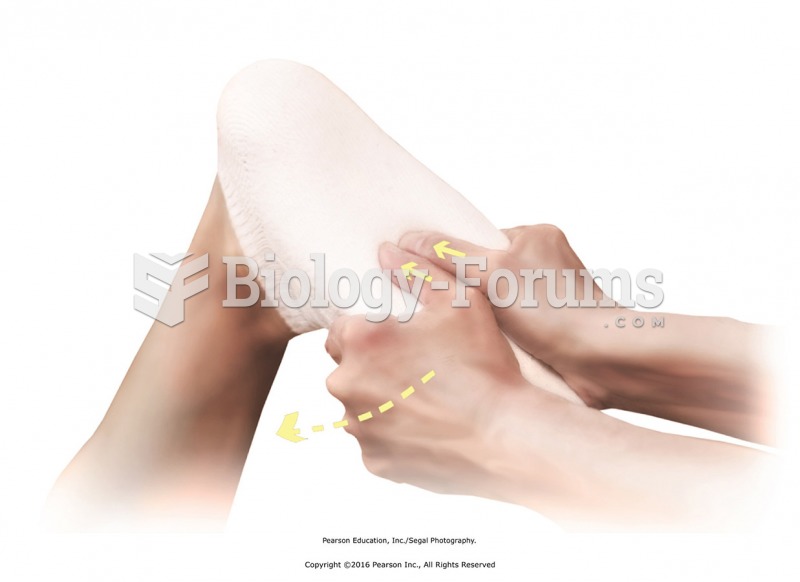 Dorsiflex the foot, applying direct pressure to the bottom. Standing at the end of the table, pick ...
Dorsiflex the foot, applying direct pressure to the bottom. Standing at the end of the table, pick ...


